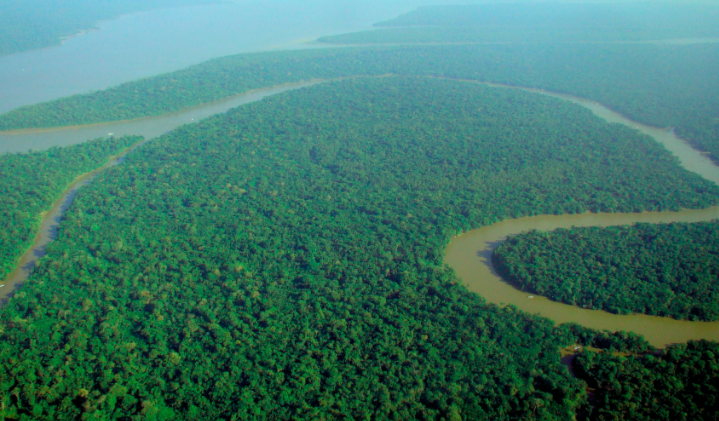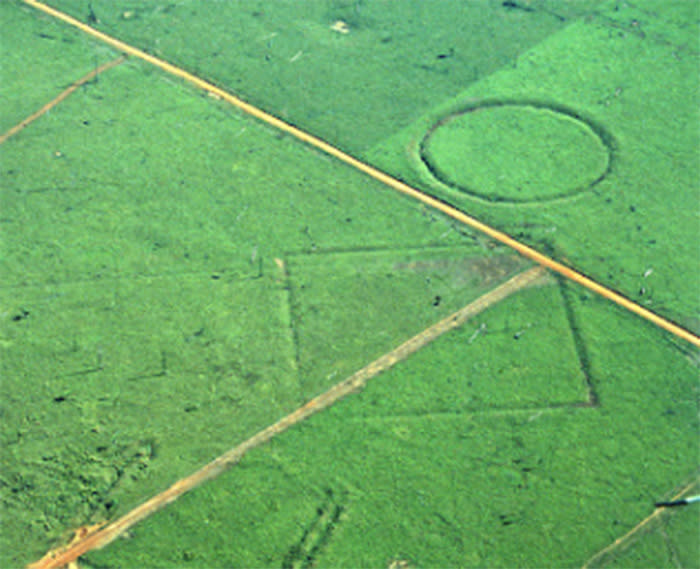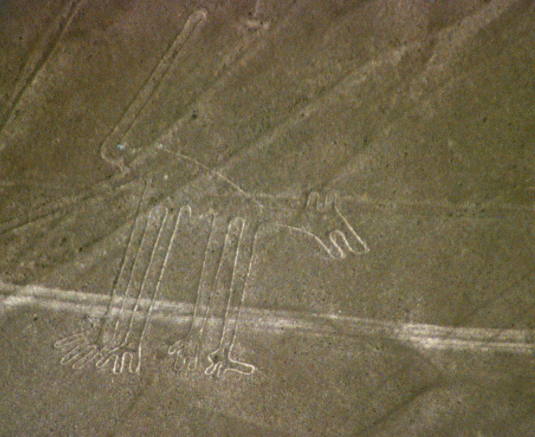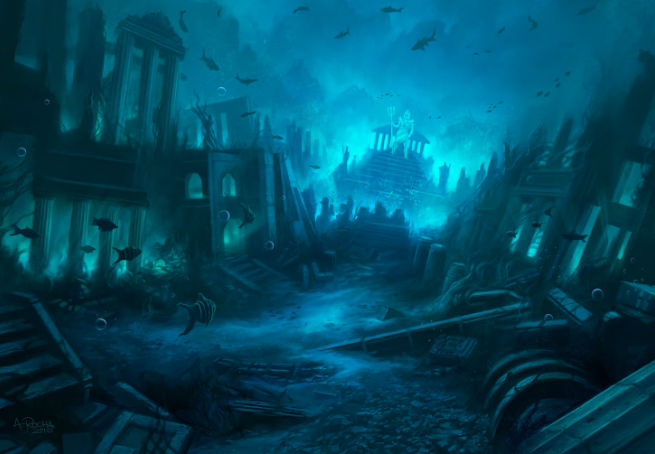Scientists Think There’s An Ancient Civilisation Buried Under The Amazon

The Amazon rainforest is home to numerous species of animal and insect - but was it also once home to an ancient civilisation that is now buried beneath the trees?
The answer to that is a ‘quite possibly’ - and the reason for this is the discovery of giant geoglyphs, that are only now coming to light in the wake of deforestation.
Geoglyphs are giant, intricate shapes that have been arranged using the landscape or carved into the earth itself - with some of the most famous being the Nazca Lines in Peru.
And as vast swathes of the Amazon in Brazil were cleared, some 210 geoglyphs in 200 different site were discovered.
These meticulously-arranged shapes often span hundreds of feet and form mystical designs and patterns - and no one knows for certain what exactly they signify or what purpose they served.

Complex societies: These geoglyphs in the Amazon suggest the area was once inhabited by thousands of people (Wikipedia)
From the air, researchers have been able to observe the designs more clearly and describe what they believe to be giant avenues, irrigation canals and fences for livestock - evidence of a complex society, rather than a small group of hunter-gatherers.
If these geoglyphs were in fact used as transport and for providing food and water then it puts paid to the traditional thinking that there were no advanced civilisations in the Amazon region before settlers arrived from Spain and Portugal in the 15th century.
In fact, archaeologist Denise Schaan, from the Federal University of Pará in Brazil told the New York Times that radiocarbon testing on pottery discovered among the excavations indicated that they were built 1,000 to 2,000 years ago - and may even have been rebuilt several times during that period.
This evidence would also suggest that rather than the Amazon simply being acres of untouched woodland, barely inhabited by people, the area may in fact have been home to THOUSANDS across dozens of towns.
Researchers estimate that the population was as high as 70,000 in some of the archeological sites already examined.

Mystery: The Nazca Lines in Peru are perhaps the most famous geoglyphs (Wikipedia)
So does the Amazon sit above evidence of a long-lost civilisation that existed before America was discovered by Columbus?
The evidence makes it extremely possible - and it wouldn’t be the first time that ancient civilisations vanished from the landscape.
In fact, there are several myths about whole societies that have simply vanished, lost beneath the landscape but still searched for to this day.
Perhaps the most famous of these is Atlantis, a mythical island that is said to have existed thousands of years ago before it sunk beneath the ocean over the course of one day and night.
Some say that the island was merely the invention of Greek philosopher Plato, who wrote of its existence in the fourth century BC.
However, that hasn’t stopped conspiracy theorists trying to determine whether it existed - or where its ruins may lie today.
Some believe a huge earthquake destroyed it and it lies beneath the waters near Greece, while others it was located off the Bahamas and was lost in the notorious Bermuda Triangle.

Legend: The lost city of Atlantis is just one of many mythical ancient civilisations (YouTube)
Back on dry land, another mythical civilisation said to be buried underneath us is Agatha, a legendary city that is thought to be located directly beneath the surface of the Earth’s surface in a series of complex caves in Tibet.
Those who are convinced of its existence believe it to be a hidden civilisation that protects the secret of untold knowledge and wealth - complete with fantastical creatures known as ‘asuras’ for good measure.
And South America is not just home to a possible Amazonian civilisation - Spanish explorers in the early 16th century spoke of a lost city called El Dorado which was filled with gold.
Local legend said that gold and precious jewels were thrown into a lake called Guativita whenever a new ruler was appointed in the city.
Explorers actually discovered the lake in 1545 and found hundred of pieces of gold along its edge - but attempts to drain it since have remained unsuccessful and, like the society who once lived in the area now dominated by the Amazon rainforest, El Dorado remains lost.
The challenge for historians now is to see whether the Amazon could unearth an actual long-forgotten civilisation that was never thought to have even existed while preserving the forest that has become its tombstone.
Top pic: Rex

 Yahoo News
Yahoo News 
